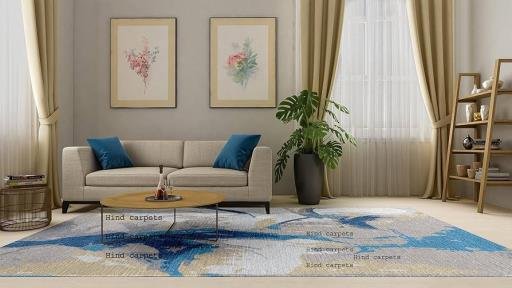Finding the Ideal Woven Masterpiece for Your Home

When it comes to decorating a space, selecting the right floor covering can dramatically transform an area. It fills the place with warmth, style, and sophistication. Among the numerous options available, traditional rugs stand out for their timeless beauty and ability to add character to any room. These pieces are not merely accessories but are art forms steeped in history, offering a unique blend of cultural heritage and exquisite craftsmanship. This article looks into the nuances of choosing the perfect woven masterpiece to complement your space, ensuring that every step from consideration to selection is informed and intentional.
Understanding the Appeal of Tradition
Traditional rugs are known for their intricate designs, rich colour palettes, and the skilled artistry that goes into their creation. Originating from cultures around the world, these rugs often feature motifs and patterns that have been passed down through generations. From the floral intricacies of Persian carpets to the geometric precision of Turkish kilims, each one carries the story of its origins, making it a piece of history in its own right.
Assessing Your Space
The first step in selecting the right rug is to thoroughly assess the space it will occupy. Consider the room’s size, the layout of the furniture, and the existing colour scheme. A well-chosen carpet should anchor the furniture, creating a cohesive look that ties the room together. For larger rooms, a sizable one that accommodates all pieces of furniture can make the area feel more connected. In contrast, smaller or more segmented spaces may benefit from multiple smaller carpets that define different areas within the room.
Colour and Pattern Consideration
Colour plays a crucial role in the selection process, as it can influence the room’s overall mood and aesthetic. Traditional rugs often feature rich, deep hues that can add warmth and depth to a space. When selecting a carpet, consider the balance of colour in your room. A rug with vibrant colours can serve as a focal point in a more neutrally decorated room. On the other hand, a carpet with subtle hues can complement and enhance an already colourful space.
Patterns are equally important. Carpets often feature complex patterns that can range from intricate floral designs to bold geometric shapes. When choosing a pattern, think about the existing motifs in your decor. A carpet with a busy pattern can add interest to a room with simple, minimalist furniture, while one with a more understated design can balance a space with more elaborate decor.
Material and Craftsmanship
The material of a carpet affects not only its appearance but also its durability and feel underfoot. Traditional rugs are commonly made from wool, silk, or a combination of both, offering a range of textures and finishes. Wool rugs are known for their durability and softness, making them a practical choice for high-traffic areas. On the other hand, silk ones offer a luxurious sheen and are better suited for lower-traffic areas due to their delicate nature.
The craftsmanship of a rug is a testament to its quality and durability. Hand-knotted ones, for example, are highly prized for their intricate detail and longevity. While they may represent a higher investment initially, their durability and timeless appeal can offer unparalleled value over time.
Size and Shape
The dimensions and shape of a carpet can significantly affect the room’s visual proportions. A correctly sized rug can make a room feel larger or more intimate, depending on its placement and the space’s dimensions. As a general rule, there should be approximately 10 to 20 inches of bare floor between the edges of the carpet and the walls of the room. Additionally, consider the shape of the room and furniture. Rectangular ones are versatile and suit most spaces, but circular or oval carpets can soften a room with many straight lines and angles.
Integrating with Your Decor
Ultimately, the chosen rug should harmonise with your existing decor, enhancing the space without overwhelming it. It’s essential to strike a balance between the carpet’s visual weight and the room’s overall aesthetic. A rug with a rich history and intricate design can serve as the centrepiece of a room, drawing the eye and inviting conversation. Alternatively, a more subdued one can unify the elements of a room, creating a sense of tranquillity and cohesion.
Selecting the perfect traditional rugs for your space involves a careful consideration of various factors. By taking the time to assess every aspect, you can choose one that not only complements your decor but also adds a layer of warmth, history, and artistry to your home.